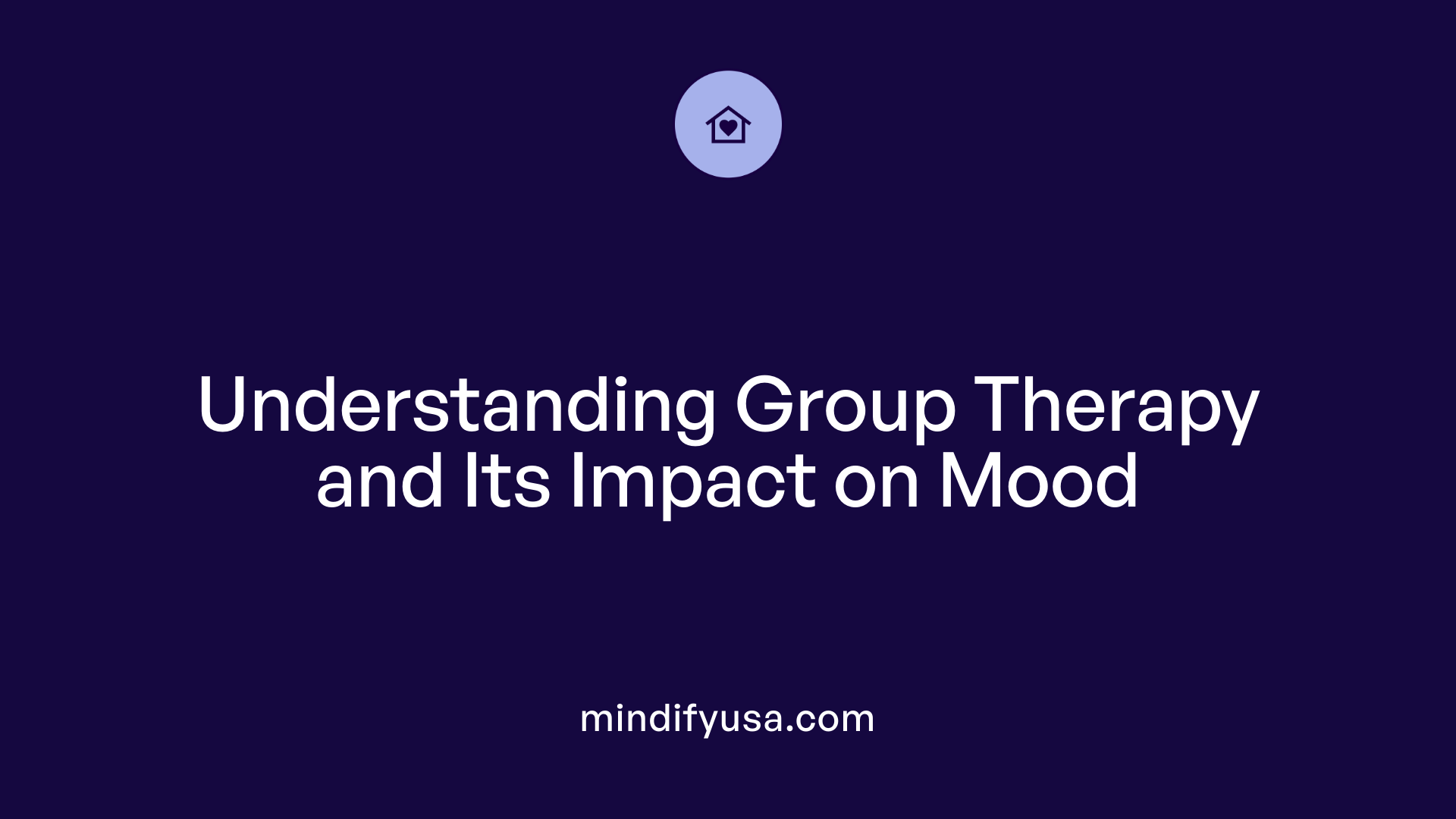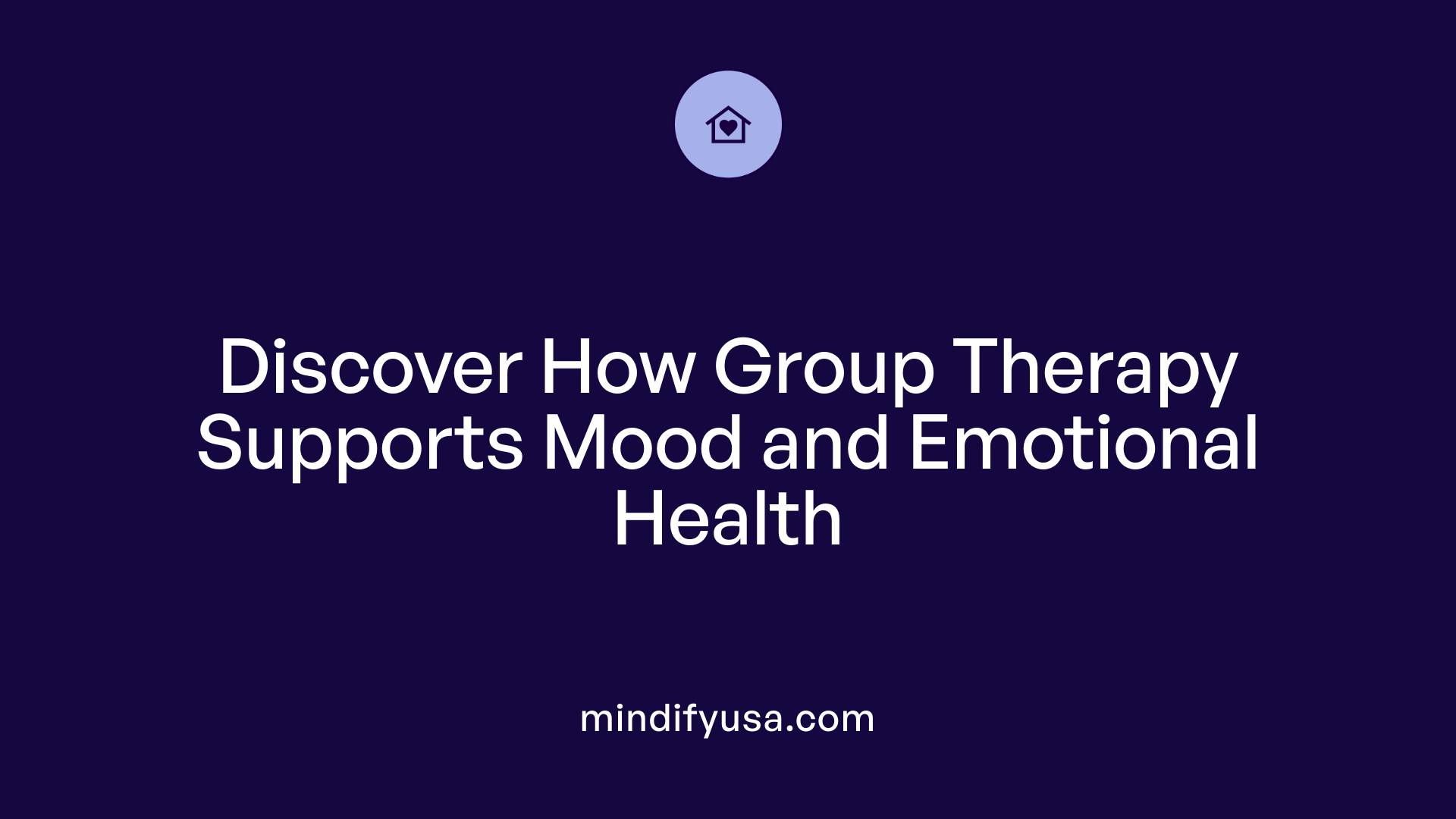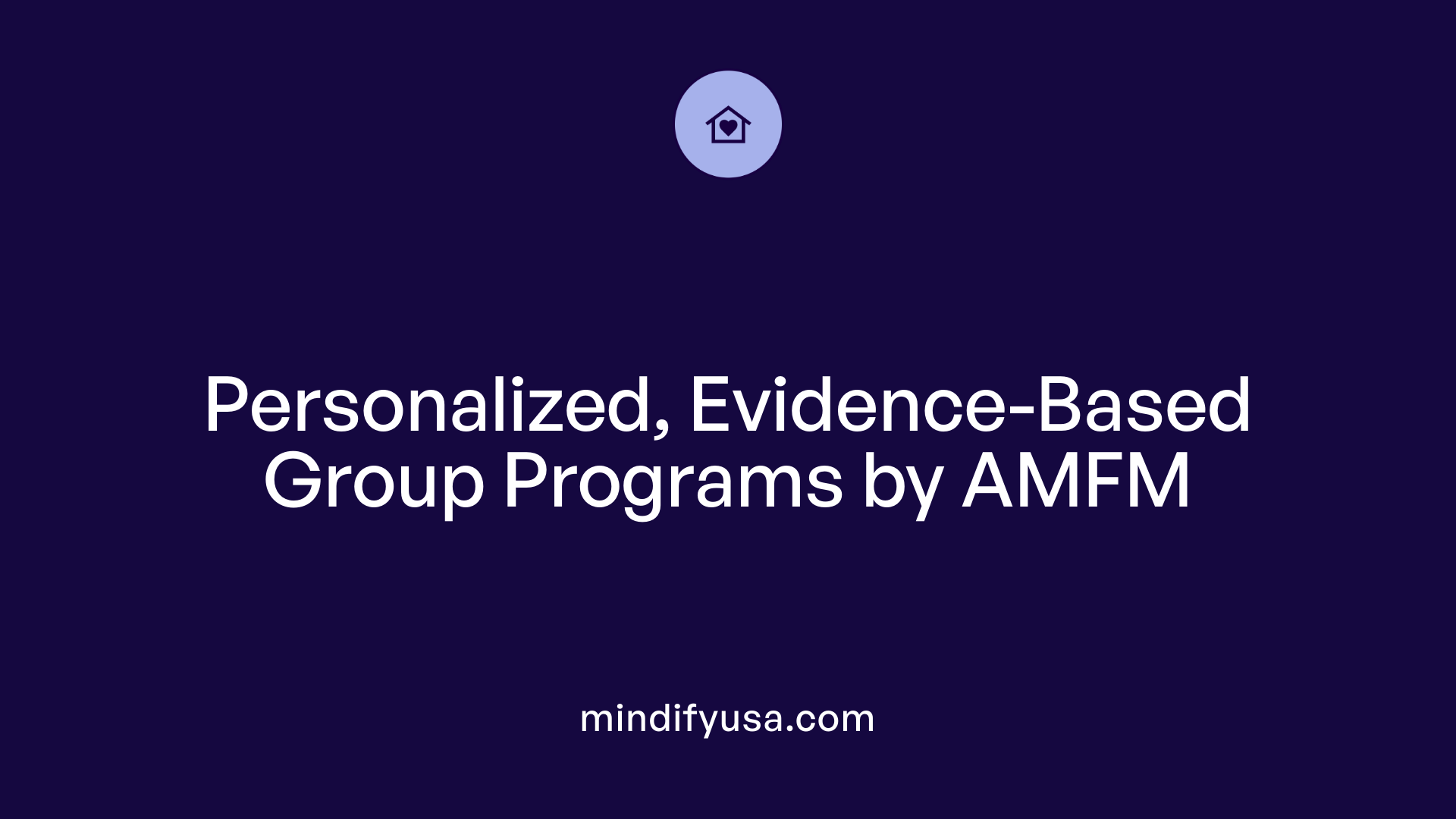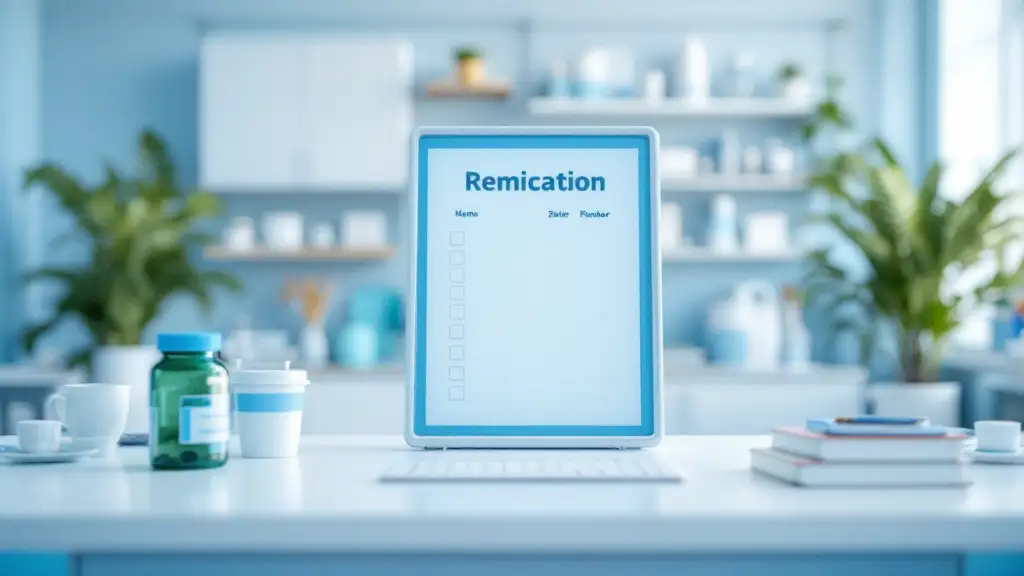Understanding Group Therapy for Mood Disorders
Group therapy has emerged as a vital component in comprehensive mental health services, particularly for mood disorders such as anxiety and depression. This therapy format leverages the collective experience, mutual support, and structured processes that empower participants toward emotional resilience and better mood regulation. This article explores the structure, types, therapeutic factors, benefits, challenges, and best practices involved in group therapy sessions tailored to mood regulation, providing a thorough understanding of this dynamic approach to mental health care.
Common Mental Health Services for Anxiety and Depression
What types of mental health services are commonly offered for conditions such as anxiety and depression?
Common mental health services addressing anxiety and depression include a combination of psychotherapy, counseling, medication management, support groups, psychoeducation, and alternative therapies.
Psychotherapy, particularly cognitive-behavioral therapy (CBT), is widely used to target the negative thought patterns and behaviors that contribute to anxiety and depression. These therapies help clients develop coping strategies and improve emotional regulation.
Medication management often involves antidepressants or anti-anxiety medications prescribed by healthcare professionals. These medications must be carefully monitored for effectiveness and side effects.
Support groups and psychoeducational sessions complement therapy by providing peer connection, emotional validation, and information about managing symptoms and triggers. Group therapy types, including therapy focused on skill-building or emotional processing, enhance social integration and reduce stigma.
Alternative therapies like mindfulness, meditation, and art therapy are increasingly integrated into treatment plans. These approaches promote self-awareness and stress reduction, often enhancing traditional treatment outcomes.
A successful mental health care plan for anxiety and depression is typically personalized, combining several of these services to meet the specific needs and preferences of each individual.
Overview of Group Therapy and Its Role in Mood Regulation

What is Group Therapy?
Group therapy is a therapeutic approach where multiple participants meet under the guidance of one or more therapists to address various mental health issues. These sessions create a structured and confidential environment that fosters emotional exploration and interpersonal learning.
How Does Group Therapy Help in Mood Regulation?
One of the crucial roles of group therapy is to aid in mood regulation, particularly for conditions like depression and anxiety. By providing a space where individuals can share their struggles and coping strategies, group therapy helps members recognize and manage emotional fluctuations better.
What Role Does Emotional Support Play in Group Therapy?
Emotional support in group therapy comes from shared experiences and validation from peers. Participants experience instillation of hope and reduced feelings of isolation as they realize that others face similar challenges, creating a healing atmosphere that encourages emotional expression and catharsis.
How Does Shared Learning Occur in Group Therapy?
Shared learning happens through activities such as interpersonal process exercises, feedback sharing, and role-playing. Participants gain insight not just from therapists but also from the diverse perspectives of fellow group members, enhancing self-awareness and developing new coping skills.
How Does Group Therapy Foster Connection?
Group therapy builds connection by developing trust and cohesion among members using icebreakers and respectful conflict resolution. These relationships provide social integration opportunities, strengthening participants' social skills and reducing stigma associated with mental health.
This multifaceted approach not only improves mood regulation but also supports long-term emotional resilience and social functioning among participants.
Types of Group Therapy for Anxiety and Depression
Psychoeducational Groups
Psychoeducational groups provide members with information about anxiety and depression. These sessions typically focus on understanding symptoms, treatment options, and strategies to manage mental health. Through education, participants can learn to identify triggers, recognize early warning signs, and develop informed coping techniques.
Skill Development Groups
Skill development groups emphasize building practical abilities to handle anxiety and depression. Activities may include teaching relaxation methods, social skills enhancement, and stress management techniques that empower participants to function more effectively in daily life.
Cognitive-Behavioral Groups
These groups apply cognitive-behavioral therapy (CBT) principles, helping members identify and challenge negative thought patterns linked to their anxiety and depression. Through group exercises and discussion, participants learn to modify unhelpful beliefs and behaviors, fostering healthier emotional responses.
Support Groups
Support groups create a safe environment for sharing experiences and emotional support. They reduce feelings of isolation by connecting individuals facing similar struggles with anxiety and depression, promoting validation and encouragement among peers.
Process Groups
Process groups focus on interpersonal relationships and emotional exploration. Facilitated by skilled therapists, these groups encourage members to develop self-awareness, improve interpersonal skills, and understand how their interactions affect mental health.
Virtual Groups
Virtual group therapy offers accessibility and convenience, especially for those unable to attend in person. These online sessions provide many of the same benefits as traditional groups, including peer support and therapeutic guidance, making treatment more flexible and inclusive.
Therapeutic Factors in Group Therapy According to Irvin Yalom
Instillation of Hope
One of the earliest and most powerful factors in group therapy is instillation of hope. Seeing others improve and sharing successes generates optimism and motivation.
Universality
Realizing that others share similar struggles reduces isolation and stigma. Universality fosters connection and acceptance.
Altruism
Helping others within the group provides participants with a sense of value and self-worth, reinforcing positive social roles.
Imparting Information
Groups serve as platforms to exchange useful knowledge, coping strategies, and therapeutic insights, enhancing participants' understanding.
Corrective Recapitulation of Primary Family Issues
Group members often relive and work through early family dynamics, allowing corrective relational experiences in a safe space.
Socialization Techniques
Therapy groups function as social laboratories where members practice and refine interpersonal skills essential for daily life.
Imitative Behavior
Observing and emulating adaptive behaviors from fellow group members helps individuals learn new ways to cope and interact.
Interpersonal Learning
Direct feedback and interaction illuminate personal patterns and relational dynamics, deepening self-awareness.
Group Cohesiveness
A strong sense of belonging and trust within the group creates a secure environment conducive to therapeutic work.
Catharsis
Expressing pent-up emotions in the group leads to emotional release and relief.
Existential Factors
Group therapy encourages participants to confront life’s existential realities, such as freedom, responsibility, and meaning, fostering personal growth.
Yalom's comprehensive framework underscores how group therapy provides a multifaceted experience that promotes healing through shared emotional and social processes.
Stage-Wise Structure of Group Therapy Sessions
Initial Contact Phase
This opening stage focuses on building trust and establishing group norms. Participants familiarize themselves with each other and the therapist, discussing confidentiality, attendance, and participation expectations. Icebreaker activities are often used to foster a welcoming environment and ease initial anxiety.
Working Phase
During this phase, the group actively engages in exploring personal issues and practicing social skills. Members share experiences and receive feedback, facilitating interpersonal learning and social cohesiveness. Therapists may introduce therapeutic techniques such as role-playing, mindfulness, or cognitive-behavioral exercises to enhance coping strategies.
Catharsis and Insight Phase
Emotional release and deeper self-awareness characterize this stage. Participants often experience catharsis, expressing feelings that might have been suppressed. Guided reflection and peer feedback help members gain new perspectives on their problems, contributing to personal insight and growth.
Problem-Solving Phase
Here, the group collaboratively works on applying learned skills to real-life challenges. Discussions focus on developing practical strategies to manage symptoms or interpersonal difficulties. Shared experiences foster empowerment and motivate participants to implement positive changes outside of therapy.
Termination Phase
This final stage prepares members for the end of the group. It involves reflecting on progress, consolidating gains, and discussing plans for maintaining improvements. Therapists facilitate closure by addressing feelings about separation and encouraging continuing self-care and support through other resources.
Building Trust, Cohesion, and Managing Conflict within Groups

Techniques for Building Cohesion
Building cohesion in group therapy is essential for creating a safe and supportive environment where members feel connected and engaged. Techniques such as structured icebreakers encourage participants to share personal experiences early on, fostering familiarity and mutual understanding. Facilitators often guide groups through shared activities that emphasize collaboration and collective problem-solving, strengthening group bonds.
Trust Development
Trust is developed gradually in group settings through consistent confidentiality, respectful communication, and reliable attendance. Facilitators promote an atmosphere where members feel secure sharing vulnerable feelings without judgment. This trust lays the groundwork for deeper emotional exploration and interpersonal learning.
Icebreakers
Icebreakers are simple activities designed to reduce initial social anxiety and facilitate group member interactions. Common icebreakers include sharing personal interests or experiences, which help normalize feelings and establish common ground. These exercises set a positive tone, making a therapeutic alliance possible.
Respectful Conflict Resolution
Conflicts in group therapy are addressed using respectful resolution strategies. Facilitators encourage open dialogue where members express differing viewpoints calmly and listen actively. Emphasizing empathy and nonjudgmental responses helps de-escalate tensions and transform conflicts into opportunities for insight and growth.
Fostering Empathy
Empathy is cultivated through guided reflection and sharing personal narratives, enabling members to understand and appreciate diverse perspectives. Practice in giving and receiving feedback within a supportive setting enhances emotional intelligence and strengthens interpersonal relationships.
Together, these approaches contribute to a cohesive, trusting group environment, which is vital for effective therapy outcomes.
Benefits of Group Therapy in Treating Mood Disorders

Emotional Support and Peer Validation
Group therapy offers a nurturing environment where individuals experiencing mood disorders such as depression and anxiety can receive emotional support and validation from peers. Sharing experiences with others facing similar challenges helps participants feel less isolated and more understood. This emotional connection promotes a sense of belonging and encourages openness, facilitating healing.
Development of Coping Skills
A significant advantage of group therapy lies in the development and refinement of coping skills. Through guided reflection, role-playing, and shared problem-solving, participants learn practical strategies to manage symptoms and triggers of mood disorders. Therapists tailor activities to individual needs, making skills acquisition relevant and effective.
Reduced Stigma and Normalization
Engaging with peers in a therapeutic setting helps diminish the stigma commonly associated with mental health conditions. Hearing others’ stories normalizes personal struggles and fosters acceptance, which can empower individuals to seek further treatment and support.
Improved Social Skills
Group sessions create opportunities to practice social interaction, feedback exchange, and conflict resolution within a safe environment. Enhanced social skills enable better relationships outside therapy and contribute to improved social integration, which is crucial for recovery.
Cost-Efficiency
Compared to individual therapy, group therapy tends to be more cost-effective. With insurance coverage often available, sessions can range from $50 to $300 each without insurance, making mental health care more accessible and sustainable for many people.
Overall, the multi-faceted benefits of group therapy—including emotional support, peer validation, skill development, stigma reduction, social enhancement, and affordability—make it an effective treatment option for individuals coping with mood disorders.
Process Group Therapy: A Personalized Approach for Anxiety and Depression
What is a Safe Supportive Environment in Process Group Therapy?
Process group therapy offers a safe and supportive setting where participants can openly share their feelings without fear of judgment. This environment fosters trust among group members, which is essential for emotional exploration and meaningful interpersonal interactions.
How Does Process Group Therapy Facilitate Emotional Exploration?
In these groups, members are encouraged to delve into their emotions through guided reflection, role-playing, and mindfulness exercises. This helps participants better understand their feelings, triggers, and behavior patterns, enhancing self-awareness.
How Are Interpersonal Relationships Developed?
Process group therapy emphasizes building interpersonal connections through activities like group storytelling and conflict resolution practice. Members learn valuable social skills by exchanging feedback and observing different perspectives, which promotes social integration.
How Does Process Group Therapy Promote Self-Awareness?
Through peer feedback and facilitated discussions, participants gain insight into their personal challenges and strengths. This heightened self-awareness can empower individuals to make positive changes in their lives.
What Are the Personalized Treatment Options in Process Group Therapy?
Therapists tailor the therapy to each group’s needs, incorporating evidence-based practices such as cognitive-behavioral techniques, mindfulness, and art therapy. Personalized goals and homework help clients practice coping strategies relevant to their anxiety or depression.
How Does Skilled Facilitation Support the Therapy?
Experienced therapists guide sessions with professionalism and confidentiality, ensuring that discussions remain productive and respectful. They manage group dynamics, promote empathy, and address challenges like conflict and discomfort, supporting effective therapy outcomes.
Evidence-Based Group Therapy Modalities
Cognitive Behavioral Therapy (CBT) Groups
CBT groups focus on identifying and changing negative thought patterns and behaviors that contribute to mental health issues. Participants learn practical skills to challenge distortions, manage anxiety, and improve coping strategies.
Dialectical Behavior Therapy (DBT) Groups
DBT groups provide tools for emotional regulation, distress tolerance, interpersonal effectiveness, and mindfulness. They are especially effective for individuals dealing with borderline personality disorder and emotional instability.
Trauma and PTSD Groups
These groups help members process traumatic experiences in a supportive environment. Techniques emphasize emotion regulation, trauma processing, and building connections with peers who share similar histories to reduce isolation.
Vocational Groups
Vocational rehabilitation groups support individuals in developing job-related skills, managing workplace challenges, and improving confidence for employment, addressing the impact of mental health on work life.
Interpersonal Groups
Interpersonal group therapy centers on improving social skills, communication, and relationship-building to enhance social integration and address relational difficulties often associated with anxiety and depression.
Family Groups
Family therapy groups facilitate communication, understanding, and problem-solving among family members to address shared challenges, improve dynamics, and foster supportive environments.
Art and Mindfulness Groups
These groups employ creative arts and mindfulness practices to promote emotional expression, reduce stress, and foster self-awareness. Activities like guided meditation, yoga, and art therapy complement traditional psychotherapy.
Each of these evidence-based modalities is tailored to specific therapeutic needs, often integrated within larger treatment plans, and facilitated by skilled therapists to maximize mental health outcomes.
Confidentiality and Group Counseling Guidelines
Why is confidentiality important in group counseling?
Confidentiality is the cornerstone of effective group therapy. It ensures that members feel safe to share openly without fear that their personal information will be disclosed outside the group. Maintaining confidentiality fosters trust and creates a protected space essential for emotional safety and therapeutic progress.
What role does attendance play in successful group therapy?
Consistent attendance is crucial in group counseling. Regular participation helps build group cohesion and trust among members, enabling the group to progress through its stages effectively. Missing sessions can disrupt the group's dynamic and slow individual and collective healing.
How are social boundaries maintained in a group setting?
Clear social boundaries help define appropriate interactions within the group. This includes respecting personal space, honoring confidentiality agreements, and understanding the limits of support shared among members. Boundaries safeguard both emotional and physical safety.
What are the communication norms within group therapy?
Effective group communication relies on respectful listening, honest sharing, and constructive feedback. Members are encouraged to express their thoughts and feelings candidly while also being mindful of others’ experiences and emotions. Facilitators guide the group in maintaining these norms.
What participation expectations exist for group members?
Active involvement is expected from all participants. This includes engaging in discussions, practicing new skills, and supporting peers empathetically. Participation not only furthers personal growth but also strengthens the group by creating a collaborative environment.
These guidelines collectively promote a therapeutic atmosphere where clients can develop self-awareness, coping skills, and social integration in a supportive setting.
Group Therapy for Specific Disorders: Depression and Anxiety
How Does Group Therapy Focus on Coping Skills in Depression?
Group therapy for depression primarily focuses on developing coping skills to manage depressive symptoms effectively. Participants learn strategies to recognize and handle mood triggers, enabling them to better regulate their emotions and reduce episodes of low mood.
How Does Group Therapy Address Symptom Management and Mood Triggers?
Within these groups, clients explore the underlying triggers of their depressive symptoms through shared experiences and therapist-guided discussions. This exploration provides insight into patterns and promotes emotional healing. Techniques like cognitive-behavioral strategies and mindfulness exercises are commonly incorporated to enhance symptom management.
What Role Does Group Therapy Play in Managing Worry, Fear, and Avoidance for Anxiety Disorders?
For anxiety disorders, group therapy helps participants manage chronic worry and fear by offering a safe environment to confront avoidance behaviors. The group setting allows members to practice social skills and exposure-based techniques, reducing anxiety-driven avoidance and improving daily functioning.
How Does Group Therapy Complement Individual Therapy for Anxiety?
Group therapy for anxiety often supplements individual therapy and medication by providing peer support and opportunities for interpersonal learning. This combination helps clients build effective coping strategies within a community, fostering validation, encouragement, and shared motivation throughout their treatment journey.
These focused approaches within group therapy provide structured support tailored to the challenges of depression and anxiety, enhancing emotional resilience and improving overall mental health outcomes.
Group Therapy in Treating PTSD and ADHD
How does group therapy support trauma processing for PTSD?
Group therapy for PTSD offers a safe space where individuals who have experienced similar traumas can connect and share their experiences. This setting facilitates trauma processing by allowing participants to express and work through difficult emotions with peer support. Techniques such as guided reflection and interpersonal process help therapists and group members explore subjective trauma narratives and promote healing.
What techniques help with emotion regulation in PTSD group therapy?
Emotion regulation is critical in PTSD recovery, and group therapy incorporates activities like mindfulness exercises and grounding techniques to help clients manage distressing feelings. The shared environment also encourages learning from others' coping strategies, fostering skills that maintain emotional balance.
How does group therapy reduce isolation in individuals with PTSD?
Feeling isolated often exacerbates PTSD symptoms. Group therapy normalizes experiences by highlighting universality among members, providing connection and reducing feelings of alienation. This social support network empowers participants and lessens the stigma often associated with trauma.
What strategies are used in group therapy to manage impulsivity in ADHD?
For ADHD, group therapy focuses on skill development, including impulse control through behavioral techniques practiced within the group. Structured activities and role-playing help participants recognize triggers and apply self-regulation strategies effectively.
How does group therapy address inattentiveness in ADHD patients?
Group settings provide opportunities to improve attentiveness by engaging clients in focused tasks and cognitive-behavioral strategies tailored to enhance concentration. Feedback and encouragement from peers reinforce positive changes in attention and executive functioning.
Why is the supportive setting important in group therapy for PTSD and ADHD?
A supportive setting fosters trust, safety, and cohesion which are essential for participants to openly share and work on their challenges. Therapists use conflict resolution and empathy-building exercises to create a therapeutic atmosphere where everyone feels valued and motivated to participate actively.
| Aspect | PTSD Focus | ADHD Focus |
|---|---|---|
| Core Therapeutic Goals | Trauma processing, emotion regulation | Impulsivity management, inattentiveness strategies |
| Group Techniques | Mindfulness, guided reflection, peer sharing | Behavioral techniques, role-playing, feedback |
| Social Benefits | Reducing isolation, fostering social support | Supportive setting encourages skill practice |
Group therapy thus serves as an effective, evidence-based approach to address the complex symptoms of both PTSD and ADHD within a collaborative and nurturing environment.
Utilizing Therapy Homework to Enhance Group Therapy Outcomes
What Are Personalized Goals in Therapy Homework?
Personalized goals in therapy homework are specific objectives tailored to each client's unique needs and challenges. These goals help guide clients in practicing skills outside of group sessions, aligning with their values, long-term aims, and relationships.
How Do Activity Plans Support Skill Practice?
Activity plans involve structured tasks or exercises designed to reinforce therapeutic skills learned during group therapy. Examples include mindfulness practices, grounding techniques, or journaling. These plans encourage consistent application, boosting skill retention and mastery.
In What Ways Does Homework Aid Symptom Alleviation?
By actively engaging in homework, clients can directly address symptoms of depression and anxiety. Practicing coping strategies and exploring triggers in daily life often leads to improved mood regulation, reduced worry, and enhanced overall well-being.
How Do Therapist and Client Collaborate on Homework?
Therapists work closely with clients over multiple sessions to set realistic homework goals and adapt activities based on skill level and motivation. They address barriers such as environmental challenges or discomfort by modifying task difficulty or timing.
What Challenges Arise with Therapy Homework and How Are They Managed?
Difficulties may include lack of motivation, external stressors, or discomfort with certain activities. Therapists support clients by creating safe spaces, providing recovery time, and connecting homework to personal meaning to foster engagement.
By integrating personalized homework within group therapy, clients strengthen their coping skills and deepen insights gained in sessions, ultimately enhancing therapeutic outcomes.
Challenges and Barriers in Therapy Homework Engagement
What mismatch issues arise with client skills?
Therapy homework can sometimes be too challenging or too simplistic relative to a client's current abilities. This mismatch can lead to frustration or disengagement. Therapists work to tailor tasks to align with each client's skills to promote a positive experience.
How do motivation issues affect therapy homework?
Clients may struggle with motivation due to emotional distress, lack of immediate results, or not fully understanding the homework's purpose. This can reduce participation and slow therapeutic progress.
What environmental and societal barriers impact engagement?
External factors such as unstable living conditions, cultural stigma, and lack of privacy may hinder clients' ability to complete homework. These societal challenges add stress and limit access to resources necessary for consistent practice.
Why can discomfort occur during homework activities?
Some therapy tasks require confronting difficult emotions or memories, leading to emotional discomfort. If not managed well, this discomfort can discourage clients from continuing their homework.
How do financial and caregiving challenges serve as barriers?
Financial difficulties may limit access to materials or consistent therapy sessions. Caregiving responsibilities can reduce available time and energy for homework adherence, creating a conflict between personal obligations and therapeutic needs.
Therapists adapt homework by adjusting difficulty, shortening tasks, or finding alternative activities to overcome these barriers. They also provide safe spaces, encourage reflection on long-term benefits, and help clients connect activities to their personal goals to increase engagement.
Adaptation Strategies for Therapy Homework and Discomfort Management
How Can Therapists Reduce the Difficulty of Therapy Homework?
Therapists often start by tailoring homework tasks to match the client's current skill levels and motivation. Reducing complexity helps clients feel more confident and capable, which increases their likelihood of engaging with the activities.
What Adjustments Are Made to Timing and Frequency?
Adjusting when and how often homework is assigned is another crucial technique. Therapists may space out activities or shorten their duration to fit better with the client’s daily routine and energy levels, thereby lowering the risk of overwhelm and dropout.
What Role Do Alternative Activities Play?
If a task proves too challenging or uncomfortable, therapists suggest alternatives that meet the same therapeutic goals. This flexibility ensures clients remain engaged without added stress, promoting steady progress.
How Is a Safe Space Created to Support Clients?
Creating a safe and supportive environment—both during sessions and for homework activities—encourages clients to express themselves without fear of judgment. This space fosters trust and openness, essential for working through discomfort.
Why Is Recovery Time Important?
Clients benefit from designated recovery periods between tasks, allowing them to process emotions stirred up by therapeutic activities. Such breaks help prevent burnout and build resilience.
How Do Personal Values Connect to Discomfort Management?
Therapists help clients link homework assignments to their personal values and long-term goals. By highlighting the meaningful benefits of the work, clients find motivation that helps them tolerate temporary discomfort and stay committed.
These strategies collectively enhance engagement in therapy homework by addressing practical and emotional barriers. They create a personalized, compassionate approach that fosters sustainable mental health improvements.
Technological Support for Group Therapy and Homework Adaptation
How Do Digital Tools Enhance Group Therapy?
Digital mental health tools are increasingly being integrated into group therapy to support and extend therapeutic work beyond sessions. These technologies can tailor interventions according to various client-specific variables such as location, timing, and expertise, offering a more personalized and responsive therapy experience.
In What Ways Are Interventions Tailored?
Interventions are designed to adapt the difficulty of activities based on the client's skill levels. For example, a client struggling with certain coping techniques can receive simplified tasks or alternate assignments that better suit their current abilities. Moreover, digital platforms can adjust scheduling, prompts, and reminders based on the individual’s routine and environment, enhancing engagement.
What Are Contextual Adaptations and Why Are They Important?
Contextual adaptations involve modifying therapy assignments based on external factors such as the client's physical location or social surroundings. Recognizing when a client is in a supportive environment versus a challenging one allows digital tools to recommend more suitable tasks or pause activities during less optimal times.
How Is Motivation Supported Through Technology?
Technology can encourage motivation by providing interactive feedback, progress tracking, and motivational messages tailored to individual needs. These features help clients stay committed to homework activities even when facing emotional discomfort or external challenges.
What Privacy Considerations Must Be Addressed?
Supporting mental health activities via technology requires careful attention to privacy and confidentiality. Systems must ensure secure data handling and protect sensitive information to maintain trust and comply with ethical standards. Additionally, personalization must balance helpful adaptation with safeguarding client autonomy.
By incorporating these thoughtful technological supports, group therapy and associated homework can become more accessible, flexible, and effective, thereby enhancing overall mental health outcomes.
Insurance and Cost Effectiveness of Group Therapy
Insurance Coverage
Many health insurance plans include coverage for group therapy sessions. This makes it a more accessible treatment option for individuals dealing with various mental health conditions such as anxiety, depression, PTSD, and others. Coverage helps reduce out-of-pocket expenses, allowing more people to benefit from professionally facilitated group therapy without significant financial burden.
Session Costs
Without insurance, the cost of group therapy can range widely from $50 to $300 per session. The variation depends on factors such as the provider's qualifications, the location of the therapy, and the complexity of the group program. Insurance often decreases these costs significantly or covers them entirely, making group therapy a feasible option for many.
Cost Benefit Analysis
Group therapy offers a cost-effective alternative to individual therapy by distributing therapist time among multiple participants. Besides being budget-friendly, group therapy provides additional benefits including peer support, shared learning, and social integration, which can enhance therapeutic outcomes. These combined benefits support its value as an efficient mental health treatment approach.
Accessibility Considerations
Cost savings facilitated by insurance coverage improve access to critical mental health services. Furthermore, the diverse formats of group therapy—including in-person, virtual options, and specialized session types—allow individuals from varying backgrounds and locations to engage in treatment tailored to their needs.
Structured Evidence-Based Programs
Programs such as those offered by AMFM exemplify the structured, evidence-based group therapy approach. These programs are designed with insurance coverage in mind and include clear admission and scheduling processes, ensuring clients receive effective, personalized treatment while managing costs effectively.
| Aspect | Details | Impact on Clients |
|---|---|---|
| Insurance Coverage | Commonly included in health plans | Lowers financial barriers, increases access |
| Session Costs | $50-$300 without insurance | Affordable treatment options with insurance |
| Cost Effectiveness | Shared therapist time, peer support benefits | Economical and therapeutically enriching |
| Accessibility | Multiple therapy formats including virtual sessions | Greater reach and flexibility for clients |
| Structured Programs | Evidence-based, tailored schedules (e.g., AMFM offerings) | Ensures quality and personalized care |
AMFM’s Structured Group Therapy Programs

Tailored Mental Health Concerns
AMFM offers a diverse array of structured group therapy programs that are specifically designed to address various mental health concerns such as anxiety, depression, trauma, and more complex conditions like borderline personality disorder or bipolar disorder. Each program is carefully curated to meet the unique needs of participants, providing targeted support through evidence-based treatments.
Admission Process
The admission process at AMFM involves thorough initial assessments to understand each client’s specific mental health status and therapeutic goals. This ensures that individuals are matched to the most appropriate group therapy, enhancing treatment effectiveness and personal engagement.
Treatment Scheduling
Group therapy sessions at AMFM are scheduled to accommodate clients' varying needs, enabling consistent attendance and participation. This includes flexibility in session timing and frequency, supported by therapists who tailor the schedule to optimize therapeutic outcomes.
Professional and Holistic Approach
AMFM emphasizes a professional and confidential environment that fosters safety and trust. Their holistic approach incorporates not only traditional psychotherapy techniques but also integrative practices such as mindfulness, art therapy, and yoga, promoting emotional resilience and self-awareness.
Evidence-Based Practices
All group therapy programs at AMFM are grounded in evidence-based practices. Techniques like cognitive behavioral therapy (CBT), dialectical behavior therapy (DBT), and trauma-informed care are utilized to provide practical coping skills, improve interpersonal relationships, and enhance mental health.
These comprehensive, client-centered group therapy programs contribute significantly to recovery and wellbeing by blending tailored treatment with supportive group dynamics.
Final Thoughts on Group Therapy Session Formats for Mood Regulation
How Does Group Therapy Benefit Mood Regulation?
Group therapy offers a rich environment for individuals dealing with mood disorders like depression and anxiety. It fosters connection and shared learning, providing emotional support that enhances coping skills and self-awareness. Participants benefit from peer support, reduced stigma, and improved social integration. These positive experiences can help alleviate symptoms by offering validation and practical behavioral techniques within a supportive community.
Why Is a Structured Format Important in Group Therapy?
Group therapy generally follows distinct stages—initial contact, working through issues, catharsis and insight, problem-solving, and termination. This structure creates a safe, predictable framework that promotes trust, cohesion, and effective communication among members. Techniques like icebreakers and respectful conflict resolution further contribute to a productive therapeutic atmosphere.
What Role Does Group Therapy Serve in Mental Health Care?
As a cost-effective, evidence-based treatment, group therapy complements individual therapy and medication across various conditions including depression, anxiety disorders, PTSD, and ADHD. Its flexibility allows for targeted approaches such as psychoeducational groups, process groups, and cognitive behavioral therapy groups. It supports emotional regulation, trauma processing, and development of social skills, making it a vital component of comprehensive mental health care.
Why Should People Consider Participating in Group Therapy?
Participation encourages emotional expression, fosters empathy, and empowers individuals with practical coping strategies. The group setting normalizes personal struggles and nurtures hope by exposing members to diverse perspectives and shared experiences. Collaborative efforts between therapists and clients ensure personalized goals and homework assignments enhance the therapeutic process beyond sessions.
What Does the Future Hold for Group Therapy in Mood Disorders?
Advancements in technology promise to personalize therapy further by tailoring interventions based on location, timing, and individual skill levels. Digital tools may enhance accessibility and engagement while carefully addressing privacy and systemic barriers. This evolving landscape ensures group therapy remains a dynamic and responsive treatment option for those managing mood regulation challenges.
| Aspect | Role in Group Therapy | Outcome for Mood Regulation |
|---|---|---|
| Emotional Support | Facilitates connection and validation | Enhances coping and reduces isolation |
| Structured Session Progression | Follows stages from introduction to closure | Builds trust and promotes insight |
| Therapeutic Variety | Includes CBT, psychoeducational, process groups | Addresses diverse clinical needs |
| Participation & Engagement | Encourages active involvement and homework | Reinforces skills and maintains progress |
| Technological Integration | Supports personalization and accessibility | Adapts interventions to client context |
Embracing Group Therapy for Effective Mood Regulation
Group therapy stands as a cornerstone in the landscape of mental health services, offering a structured, supportive, and cost-effective means of managing mood disorders such as anxiety and depression. Its multi-faceted approach—rooted in proven therapeutic factors, various group modalities, and a clear session format—facilitates emotional resilience, social connection, and practical coping strategies. By addressing challenges in engagement and employing adaptive techniques bolstered by technology and personalized care, group therapy ensures accessibility and efficacy. Embracing this form of therapy empowers individuals to navigate their mental health journeys within a communal space, enhancing overall wellbeing and fostering hope.
References
- Group Therapy: How To Provide Effective Sessions
- Group Therapy for Mental Health Disorders
- Approaches to Tailoring Between-Session Mental Health ...
- Process Group Therapy - California Mental Health
- Anxiety Disorders - National Institute of Mental Health (NIMH)
- Mental Health Conditions: Depression and Anxiety
- Mental disorders





































































































